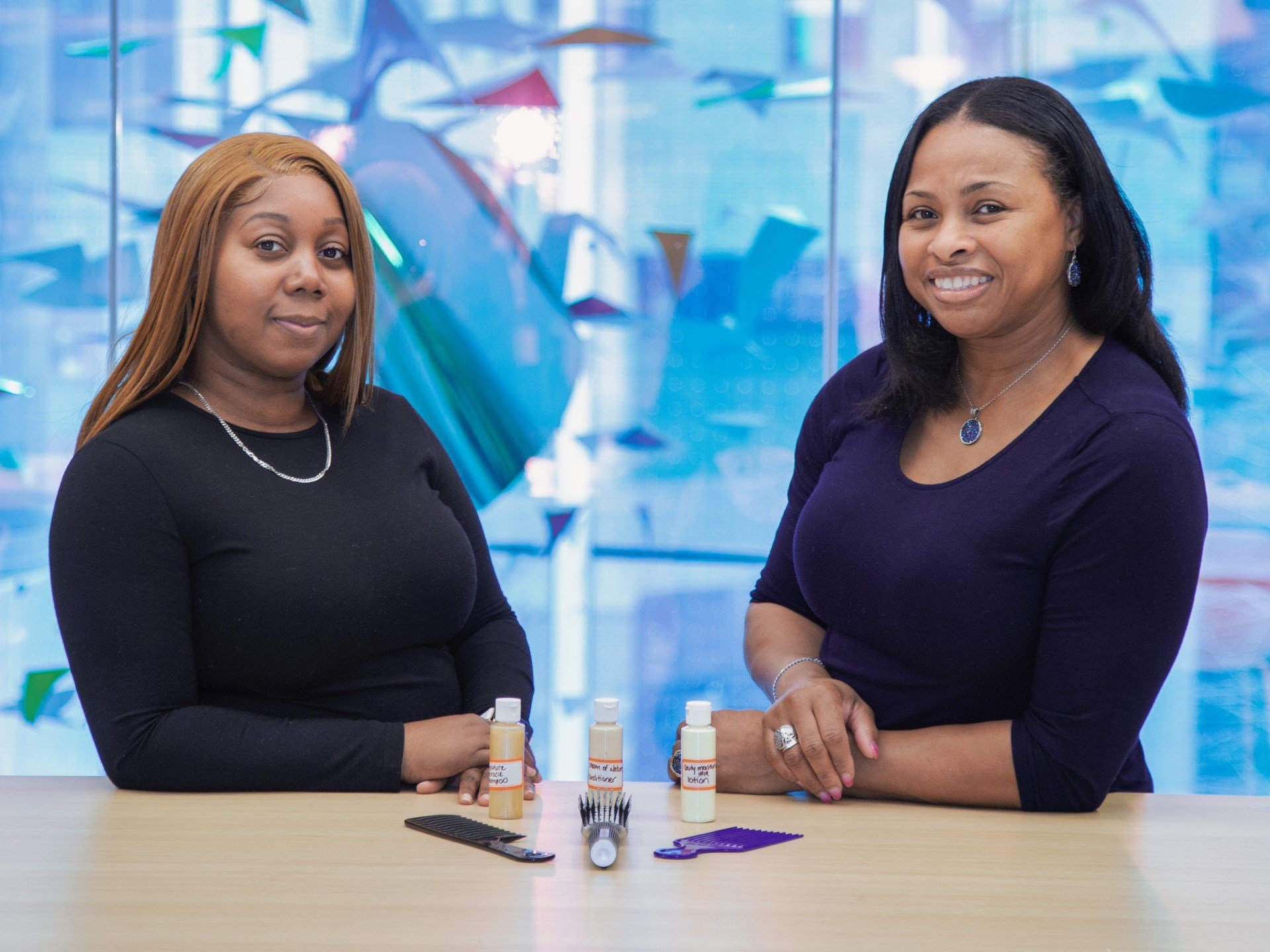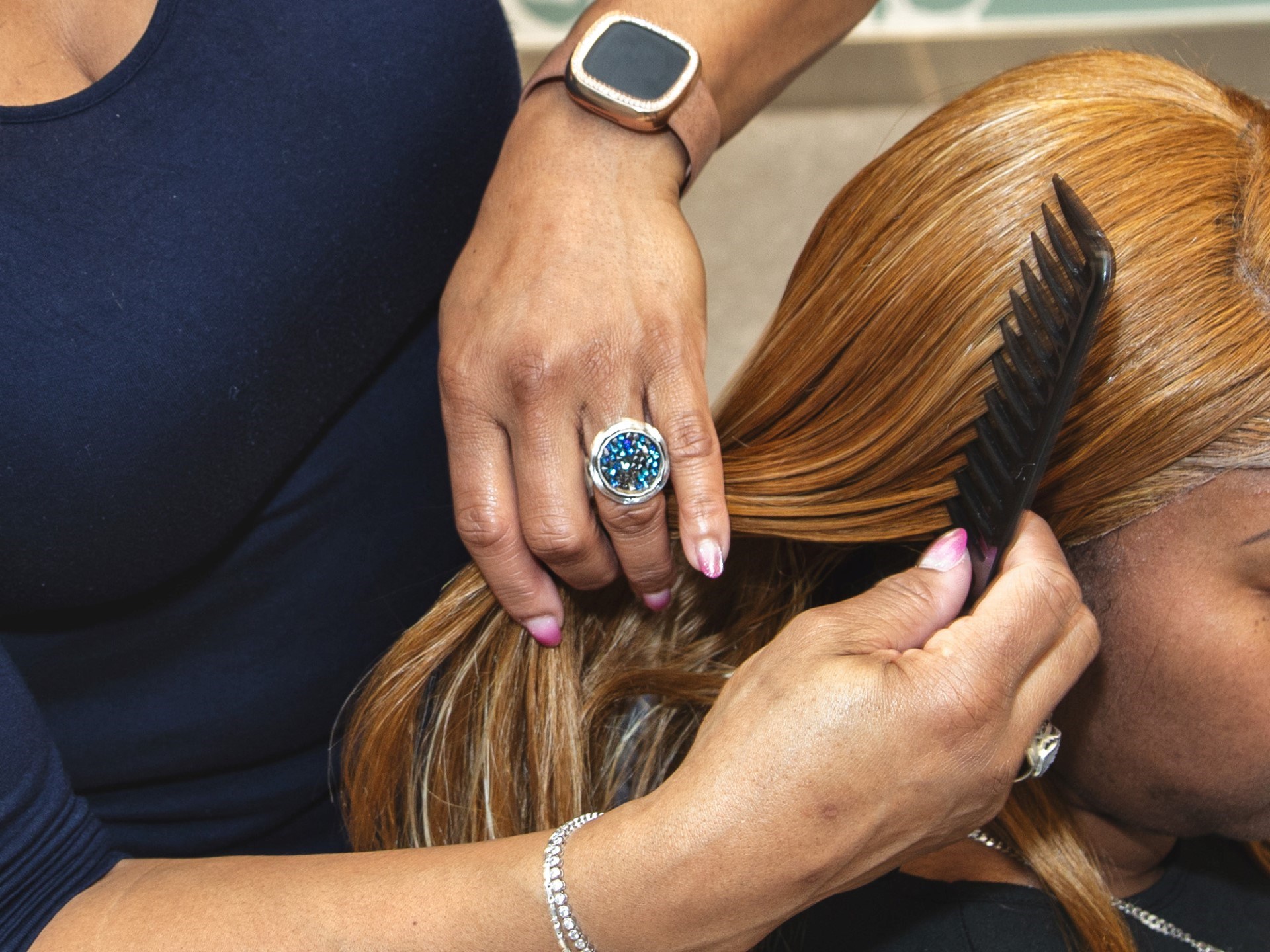A step towards hair equity: Breaking barriers in paediatric care
Summary:
An innovative initiative led by staff is reshaping the patient experience and improving patient dignity for Black and biracial children and youth receiving mental health care at SickKids.
Culturally appropriate hair care is a cornerstone of self-esteem, mental health, and dignity, but ensuring the unique hair needs of Black and biracial patients is a gap that is often overlooked in health care. Led by Child and Youth Counsellors (CYC) at The Hospital for Sick Children (SickKids), the Hair Equity Initiative aims to address these unique needs as part of SickKids’ commitment to equity and inclusivity.
“Hair is a reflection of identity and self-worth in Black and biracial communities,” says Latoya Palmer, who, along with CYCs Donnette Reynolds and Danielle Tabar, started the program. “When a patient’s hair is cared for, it’s more than just grooming. It’s about helping them feel seen, valued, and capable.”

Latoya Palmer (left) and Donnette Reynolds (right) stand in front of a selection of hair care products used in the Hair Equity Initiative.
Renewing confidence and restoring dignity
The transformative Hair Equity Initiative was born on Unit 7A, which specializes in child and youth mental health. Some patients arrive at the hospital with few personal belongings, and for many, the burden of stigma and cultural misunderstandings of mental health can compound their struggles.
“We’ve seen children in the emergency department ranging from five- to 17-years-old, but on the inpatient unit, patients are typically between eight and 17, experiencing a wide range of mental health conditions,” explains Reynolds. “Living with mental health challenges in any setting is difficult, but adding a hospital stay and unfamiliar routines can make it overwhelming.”
The 7A team—from psychiatrists to nurses to counsellors—works in tandem to address patients’ physical, emotional, and psychosocial needs. Yet it became clear to Palmer, Reynolds and Tabar that standard in-hospital hygiene products were not meeting the needs of Black and biracial patients who struggled with inadequate products that left their hair dry, unmanageable, or susceptible to breakage. Recognizing the direct link between physical appearance and mental health, the group took action.
“Basic hair care was often overlooked. Some of our patients felt embarrassed about how they looked, which made it harder for them to engage in treatment,” says Reynolds. “That sense of shame really can derail mental health recovery."
It’s not just about hair; it is about dignity and helping patients feel more confident and comfortable.
Soon, they pooled resources on 7A and began stocking items like wide-tooth combs, lotions for skin, and moisturizing shampoos and conditioners for textured hair. The impact was immediate: patients who once hid under hats or felt too self-conscious to participate in group therapy began to open up. Since it began, the initiative has provided culturally appropriate hair care to hundreds of patients, reinforcing a sense of dignity and confidence.

A closer look at some of the essential hair care products used in the initiative, including wide-tooth combs and moisture-rich shampoos and conditioners.
Expanding impact beyond Unit 7A
SickKids’ Hair Equity Working Group, in partnership with teams ranging from quality improvement, nursing, supply chain, patient and family experience, and infection prevention and control, is exploring how to integrate these practices across the hospital.
“There’s definitely an interest in broadening this initiative beyond 7A,” says Elena Blackwood, an Interprofessional Education Specialist and Hair Equity Working Group member. “We’re in the early stages, but we’ve been learning from other hospitals that have successfully integrated hair equity into their care models.”
Blackwood first learned about similar work being done at a children’s hospital in the U.S. through the Solutions for Patient Safety Network. Inspired by their approach, she connected with their team to better understand how they sourced culturally appropriate hair care products and incorporated them into hospital protocols. Now, SickKids is looking at how to bring these learnings into its own approach to holistic care.
“There’s been a growing awareness of this issue across departments,” Blackwood adds. “This isn’t only about mental health—it’s about dignity and hygiene for all patients. I’ve seen first-hand how difficult it can be for families when their child’s hair isn’t properly cared for during a hospital stay.”
Changing lives, one strand at a time
The effect of the SickKids Hair Equity Initiative has been profound. Families, often juggling emotional upheaval, find comfort in knowing that their cultural needs are recognized. Patients, once disheartened by their appearance, rediscover self-confidence.
“One moment that stands out was seeing a patient’s reaction after having their hair braided for the first time in years,” shares Reynolds. “It was an emotional experience that underscored how something as simple as hair care can carry deep personal significance. Moments like that remind us why this work is so vital.”
For Reynolds, the initiative goes beyond providing products—it’s about teaching children and youth essential life skills. She recalls working with a young patient who didn’t know how to care for their hair because they had never been taught. “I stood outside the bathroom door, coaching them through each step,” she explains. “We practiced together beforehand, measuring the right amount of shampoo in their hand, and I walked them through how to lather, rinse, and condition their hair. It wasn’t just about the steps—it was about building confidence and independence.”

More than just hair care—this initiative represents compassion, support, and the power of inclusive health care.
The future of hair equity
With the support of SickKids leadership, the Hair Equity Initiative continues to spark discussions on holistic care and has encouraged other departments to explore how they can adapt similar practices.
“This work is growing,” says Blackwood. “It started with three incredible counsellors on 7A, but it’s become a hospital-wide conversation. The more we integrate inclusive practices like this, the closer we get to truly equitable care.”
Palmer, Reynolds, and Tabar hope to see their efforts inspire similar programs across the health-care system.
“It’s about more than just the physical,” says Palmer. “It’s emotional, psychological, and even spiritual. By meeting patients where they are, we open doors for healing and build trust that lasts beyond a hospital stay.”

